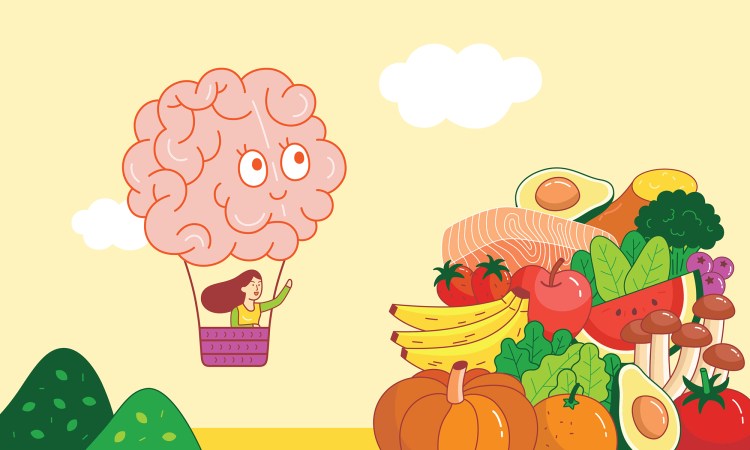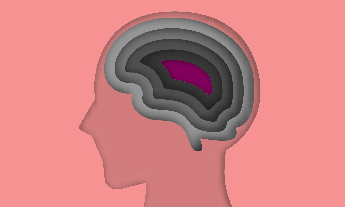
Adopting a brain-healthy diet is a powerful tool in maximizing cognitive health and helping prevent dementia and Alzheimer’s disease, says neuroscientist and nutritionist Lisa Mosconi. What’s more, it may even ward off common ailments that affect many women, from slow metabolism to insomnia and depression. Here are 8 steps to take.
Based on results from rigorous research in women, these 8 steps are designed to maximize the intake of nutrients to keep the female brain young and energized, while also supporting the microbiome, protecting the heart, and reducing menopause symptoms.
Although it’s best to optimize your diet for brain health well before you experience any cognitive decline, making these changes whenever you can will put you at an advantage. Regardless of your age, genetics or medical predispositions, your quality of life can be enhanced by these practices.
Step 1: Manage your carbs
Not all carbs are created equal. These are my three golden rules:
1. Vegetables and fruits are “carbs”, and vegetables should make up half of your plate at meals.
2. Whole grains are in; refined grains (in white flour, white pasta and white bread) are out.
3. Legumes and starches like sweet potatoes are also excellent sources of good carbs.
When most people think about “carbs”, they think of bread and potatoes. But fruit and vegetables are high in healthy carbs, as well as vitamins, minerals and phytonutrients that reduce inflammation and promote brain resilience.
Look for these veggies: dark leafy greens (spinach, Swiss chard, kale) and cruciferous veg (broccoli, cauliflower). Studies show that people who consume 1-2 servings of leafy greens each day experience fewer memory problems and cognitive decline than people who rarely eat them1. Low to medium glycemic vegetables such as onions, beets, pumpkin and carrots are also good.
Some people avoid fruits due to sugar, but many fruits are supportive of memory and mental acuity thanks to high vitamin and antioxidant content. If you are concerned about sugar, choose low glycemic fruits like berries, apples, lemons, oranges, grapefruit and even watermelon.
As a woman, keeping yourself at your best also means falling in love with fiber. Fiber has balancing effects on estrogen levels and plays a vital role in stabilizing blood sugar and insulin. Besides, fiber-rich foods digest more slowly and are more filling.
There are two types of fiber — soluble and insoluble — and we need both. Soluble fiber comes from fruit, root vegetables, small leafy greens, most legumes, and pumpkin and squash. Insoluble fiber is found in large-leaf vegs (spinach, kale, chards); crunchy, leafy veg (radicchio, arugula) and cruciferous veg (broccoli, brussels sprouts). Sweet potatoes or yams (eaten with their skin), and whole grains (with their husks) also provide hydrating, filling fiber.
Current guidelines recommend roughly 25 grams of fiber per day for women and 38 grams per day for men. I’m not in total agreement — I think women should consume more fiber, but you’ve got to start somewhere. To reach 25 grams, you could eat a 1/4 cup of steel-cut oats and three dried prunes for breakfast (7 grams of fiber), spinach and kale salad with half an avocado for lunch (9 grams), and minestrone soup for dinner (12 grams), and brava, you did it. And there’s still room for your protein of choice.
As a neuroscientist and nutritionist, I’m frequently asked if whole grains are bad for your brain. My answer is: Not really. The latest science shows no conclusive evidence that eating grains increases the risk of cognitive decline or dementia.
Step 2. Get to know the phytoestrogens
“Phytoestrogen” refers to estrogen from a plant, and phytoestrogen is usable in human bodies — but with a milder effect. The two major types are: isoflavones, found mostly in soy, and lignans, abundant in seeds, whole grains and legumes, along with many fruits and vegetables.
Soy, however, has become very controversial — it’s promoted as a superfood one minute and black-listed as a cancer-causing poison the next. Over the past decade, research has begun to clarify that isoflavones do not increase breast cancer risk in women. Although more investigation is needed, a cross-analysis of studies pooling 20,000 breast cancer patients indicated that isoflavones don’t increase the odds of breast tumor recurrence, and in some cases, can even reduce mortality.
It is safer to absorb isoflavones from foods, like soy, rather than from supplements. But not all soy is good. The Japanese almost exclusively consume soy that is organic and fermented (as in miso, tempeh and natto). I think that is the only type of soy worth eating.
If soy is not your thing, lignans can also help boost estrogen. They’re found in flaxseeds, sesame seeds, chickpeas, apricots, apples, yams and olive oil.
Step 3: Protect the brain with antioxidants
Of all our organs, the brain suffers the most from “oxidative stress,” which refers to the production of harmful free radicals in the body and our ability to counteract them. The more free radicals your brain harbors, the more damage done.
Antioxidants are vitamin-warriors that fight free radicals. Amongst the most powerful are vitamins C, E, beta-carotene and selenium and plant-made nutrients like lycopene and anthocyanins. Our research shows that an antioxidant-rich diet is associated with steady brain energy levels and fewer Alzheimer’s plaques, especially in women.
One of the best ways to reduce oxidative stress lies in what we eat. Fruits such as berries, oranges, grapefruits and apples are excellent sources of antioxidants. Leafy green and cruciferous veg (broccoli, cabbage, spinach, kale) are great too, as are onions, carrots, tomatoes, squash and artichokes. Extra-virgin olive oil is loaded with anti-inflammatory vitamin E. Brazil nuts are the best source of selenium, but it’s also in rice, oats, mushrooms and lentils.
Step 4: Choose the right fats
Whenever someone asks what is the single most important thing to do is to sustain their brain, I always give the same answer: Do not eat processed foods, especially those that contain trans fats.
A recent study following over 104,000 people for 18 years found that consuming processed foods led to a 12 percent increase in all kinds of cancer and up to an 11 percent increase in breast cancer in postmenopausal women27. According to the World Cancer Research Fund, roughly one-third of the most common cancers could be avoided by eliminating or drastically reducing the consumption of processed foods and trans fats.
Among the other types of fat, polyunsaturated fatty acids (PUFAs) are particularly good for the brain, and the most common are omega-3 and omega-6. While we need both, omega-3s are the best source of fat for an aging brain. Their anti-inflammatory properties also help women preserve heart, breast and bone health. Fatty fish (salmon, mackerel, lake trout, herring, albacore tuna, anchovies, sardines) and their eggs (like caviar and salmon roe) are the best natural sources of DHA, a type of omega-3s the brain craves most.
Women also can benefit from monounsaturated fat from nuts such as almonds, cashews, hazelnuts, pistachio and Brazil nuts; fatty fruit (avocado and olives); and some oils and nut butters from sesame and sunflower seeds.
Step 5: Feed your microbes
Our gut is home to trillions of bacteria and other microorganisms that make up our microbiome, an environment which holds a strong influence over brain functionality. Gut bacteria help us digest food, power our metabolism, and even produce some essential vitamins. Additionally, gut flora can act on behalf of our immune system, defending us against harmful microbes. New research reveals our microbiome may be involved in several aspects of brain health and behavior, especially in reactions to stress and anxiety.
Here’s what to feed your gut to keep it healthy:
• Fiber-rich foods. Besides promoting insulin sensitivity and hormonal balance, fiber supports digestive health and regularity.
• Prebiotics. These non-digestible carbs are “fertilizer” for good gut bacteria. Garlic, onions, asparagus, bananas, cabbage, leeks and artichokes are great sources, as are legumes, beans and lentils.
• Probiotics. When they reach the intestine, these live bacteria — found in fermented and cultured foods, including dairy (yogurt and kefir) and vegetables (sauerkraut and brine-fermented pickles) — replenish our microbiome’s good guys.
Step 6: Watch alcohol and coffee intake — and fill up with water
Alcohol and coffee are influential when it comes to women’s health, and not in the best of ways. Studies have shown that alcohol can increase the risk of hot flashes and, for some women, of breast cancer; drinking too much alcohol encourages weight gain as well.
That said, for most women, some wine is OK, especially if it’s red. Red wine has high levels of resveratrol, an antioxidant. If you’re someone for whom alcohol is advised, a five-ounce glass of wine once in a while (but no more than once a day) can be good for you.
Some research shows that moderate coffee intake may also promote a healthy brain. “Moderate” means a maximum of 300 miligrams of caffeine a day — equal to a single espresso or 2 small cups of coffee (6-8 ounces). The type of coffee matters: Freshly brewed espresso has the highest anti-aging capacity, while instant coffee has none.
When it comes to what drink is the healthiest, the best advice I can give is this: Drink water, and a lot of it. Water is a crucial element for the brain and body. The brain is 80 percent water, and every chemical reaction in it depends on water to occur. The brain is so sensitive to dehydration that even a minimal lack of water can cause fatigue, dizziness, confusion, headache and even brain shrinkage.
Drinking eight 8-ounce glasses of water a day is backed by research that shows this amount will maintain the proper percentage of bodily fluids in your system and can also speed up reaction time and cognitive performance by up to 30 percent.
Step 7. Go organic, as much as you can
We are constantly exposed to substances that mess with our hormones. Up to 25 percent of the pesticides sprayed on non-organic fruit and vegetables are known to disrupt the body’s estrogen balance.
The only downside to eating organic is the expense. One way to reduce costs is to prioritize which foods need to be purchased in organic forms and to do your best with the rest.
Produce is the highest priority food to buy organic. Within that category, cut costs with this loose guideline: If a fruit or vegetable has a peel that you eat, then buy organic. If you peel the fruit or vegetable, buying organic is somewhat less critical.
Step 8. Eat less
New research indicates that reducing caloric intake can boost cognitive capacity, reduce cellular aging, and promote longevity. Nearly a century of data shows that stressing our bodies and brains by restricting calories — within reason! — pushes cells to grow stronger and more resilient. Caloric restriction also boosts the brain’s antioxidant defense system, important for the female brain. It’s also a great way to lose a few pounds, if you need to, and keeping a healthy, stable weight is beneficial for women.
Caloric restriction means reducing intake by 30 to 40 percent. Instead of consuming an average of 1,500 calories a day, you’d consume 900 to 1,100. Two ways to practice calorie restriction are intermittent fasting and the 5:2 diet.
I’d argue that just eating less throughout the day may be as effective. The Okinawa centenarians have adopted the philosophy of “hara hachi bu”, in which they stop eating when they are 80 percent full, a practice tied to their longevity. One efficient way to consume fewer calories and maintain nutritional quality is to increase consumption of vegetables, low glycemic fruit, lean protein and essential fats — and squeeze out sugary, fatty and processed foods.
Excerpted with permission from the new book The XX Brain: The Groundbreaking Science Empowering Women to Maximize Cognitive Health and Prevent Alzheimer’s Disease by Lisa Mosconi PhD. Published by Avery, an imprint of Penguin Random House, LLC. © 2020 by Lisa Mosconi.
Watch her TEDWomen Talk now:















